
Best Pelican Vault V525 Hard Case (Camera, Review nanuk 935 – Oemiu
Pelican Vault V525 Hard Case vs. Nanuk 935: A Detailed Review
The world of photography and videography demands robust protection for sensitive equipment. Whether you’re a seasoned professional traversing challenging landscapes or a hobbyist carefully storing your gear at home, the right hard case is paramount. Two names consistently rise to the top in this category: Pelican and Nanuk. In this comprehensive review, we’ll delve deep into the Pelican Vault V525 Hard Case and the Nanuk 935, examining their strengths, weaknesses, and suitability for various applications. We’ll explore everything from build quality and water resistance to interior customization and overall value, helping you make an informed decision for your precious cargo. Considering the diverse needs of photographers and videographers, understanding the nuances of each case is essential. Let’s begin our detailed comparison, focusing on practical aspects and real-world scenarios to provide you with the best possible insights.
A Head-to-Head Comparison: Build Quality and Durability
The primary purpose of a hard case is to shield your equipment from the elements and physical impacts. Both the Pelican Vault V525 and the Nanuk 935 are built to withstand considerable abuse, but their construction philosophies differ slightly. The Pelican Vault V525, as its name suggests, is built with a robust polymer material that provides excellent impact resistance. It features heavy-duty latches and a solid O-ring seal to keep out dust and water. The Vault series is positioned as Pelican’s more budget-friendly line, but don’t let that fool you – it’s still incredibly tough. The case feels substantial in hand and can withstand being dropped, bumped, and generally roughed up without compromising the safety of its contents.
The Nanuk 935, on the other hand, employs a NK-7 resin construction, which Nanuk claims is lighter and more impact-resistant than some other polymers. The Nanuk 935 features Nanuk’s patented PowerClaw latching system, which is incredibly secure and easy to operate. Many users find the Nanuk’s latches to be smoother and more reliable than the Pelican Vault’s. The Nanuk 935 also boasts an IP67 rating, meaning it’s dustproof and waterproof up to 1 meter for 30 minutes, giving it a slight edge in extreme conditions. Comparing the two, the Nanuk 935 feels a bit more refined in its construction, while the Pelican Vault V525 offers excellent protection at a more accessible price point. When considering build quality alone, some find the lightweight nanuk 935 more comfortable to carry and prefer the latching system. Ultimately, the best choice depends on your specific needs and budget. Both cases provide excellent protection, but the Nanuk 935 has a slight advantage in terms of ingress protection.
Consider this scenario: A landscape photographer trekking through Iceland needs a reliable case for their camera and lenses. They’re likely to encounter rain, dust, and potentially rough terrain. Both the Pelican Vault V525 and the Nanuk 935 would offer adequate protection, but the Nanuk 935’s IP67 rating might provide extra peace of mind in particularly wet conditions. Conversely, a studio photographer who primarily works indoors might find the Pelican Vault V525 perfectly sufficient, especially if budget is a concern.
Internal Customization: Foam, Dividers, and Organization
A hard case is only as good as its ability to securely hold and organize your equipment. Both the Pelican Vault V525 and the Nanuk 935 offer options for internal customization, but their approaches differ significantly. The Pelican Vault V525 typically comes with pre-scored, pick-and-pluck foam. This allows you to create custom cavities for your gear by manually removing small foam squares. While effective, this method can be time-consuming and doesn’t always result in the cleanest or most precise fit. Additionally, once foam is removed, it can’t be replaced, limiting your ability to reconfigure the case in the future. The Nanuk 935 offers more versatility in its internal configurations.
The Nanuk 935 can be purchased with either cubed foam, layered foam, padded dividers, or without any internal inserts, giving you the freedom to choose the best option for your specific needs. The padded dividers are particularly appealing to photographers and videographers, as they allow for quick and easy reconfiguration of the case’s interior. You can adjust the size and placement of the dividers to accommodate different lenses, cameras, and accessories, ensuring a snug and secure fit. For example, a wildlife photographer with a variety of lenses and camera bodies will likely appreciate the flexibility of the Nanuk 935’s divider system, enabling them to quickly adapt the case to different equipment configurations. The Pelican Vault V525 might be a better choice for someone with a more fixed set of gear or who doesn’t mind the labor of customizing the foam.
Let’s look at another scenario: A filmmaker needs to transport a camera body, three lenses, a microphone, and various small accessories. With the Pelican Vault V525, they would need to carefully pluck out foam squares to create custom cavities for each item, which could take a significant amount of time and effort. With the Nanuk 935 equipped with padded dividers, they could simply adjust the dividers to create compartments that perfectly fit each piece of equipment, saving time and ensuring a secure fit. The reconfigurable design of the Nanuk 935 would also make it easier to adapt the case to different equipment configurations in the future. Those looking for a lightweight nanuk 935 for easy transport should consider these configuration options as they will affect overall weight.
Here’s a quick comparison in table form:
| Feature | Pelican Vault V525 | Nanuk 935 |
|---|---|---|
| Internal Customization Options | Pick-and-pluck foam | Cubed foam, Layered foam, Padded dividers, No inserts |
| Reconfigurability | Limited (foam cannot be replaced) | High (dividers can be easily adjusted) |
| Ease of Customization | Moderate (requires manual plucking) | Easy (dividers can be quickly adjusted) |
Weather Resistance and Sealing: Protecting Against the Elements
For photographers and videographers working in challenging environments, weather resistance is a critical factor. Both the Pelican Vault V525 and the Nanuk 935 are designed to protect your equipment from the elements, but their sealing capabilities differ slightly. As mentioned earlier, the Nanuk 935 boasts an IP67 rating, indicating that it is completely dustproof and waterproof up to 1 meter for 30 minutes. This makes it an excellent choice for use in wet or dusty environments. The Pelican Vault V525 is also equipped with an O-ring seal to keep out dust and water, but it does not have an official IP rating. While it’s certainly water-resistant, it might not offer the same level of protection as the Nanuk 935 in prolonged or submerged conditions.
The difference in weather resistance can be significant in certain scenarios. For example, a photographer documenting wildlife in a rainforest would be wise to choose the Nanuk 935, as it can withstand heavy rain and high humidity without compromising the safety of the equipment. A landscape photographer shooting near waterfalls or on a boat would also benefit from the Nanuk 935’s superior water resistance. The Pelican Vault V525 would still provide adequate protection in most typical outdoor conditions, but it might not be the best choice for environments where prolonged exposure to water or dust is likely. This is an important consideration especially for those looking for the best hard case nanuk 935.
The sealing mechanisms on both cases are well-designed, but the Nanuk 935’s PowerClaw latching system creates a particularly tight and secure seal. The latches on the Pelican Vault V525 are also robust, but some users find them slightly more difficult to operate than the Nanuk’s latches. Consider the environment where you’ll be using the case. If you frequently work in wet or dusty conditions, the Nanuk 935’s IP67 rating provides a significant advantage. If you primarily work in more controlled environments, the Pelican Vault V525’s water resistance may be sufficient.
Ergonomics and Portability: Comfort and Convenience
Beyond protection, a good hard case should also be easy to carry and transport. Both the Pelican Vault V525 and the Nanuk 935 are designed with ergonomics in mind, but their approaches to portability differ. The Nanuk 935 comes standard with a retractable handle and wheels, making it incredibly easy to transport through airports, studios, or any other location with smooth surfaces. The wheels are smooth-rolling and durable, and the retractable handle is comfortable to grip. This feature is a major advantage for photographers and videographers who frequently travel with their equipment. The Pelican Vault V525 lacks wheels and a retractable handle, relying instead on a single, sturdy top handle for carrying. While the handle is comfortable, carrying a fully loaded Pelican Vault V525 can become tiring over long distances. For those who primarily transport their equipment in vehicles, this might not be a significant concern. However, for photographers who often walk or travel by air, the Nanuk 935’s wheels and retractable handle offer a clear advantage.
The weight of the cases is also a factor to consider. The Nanuk 935 is often praised for its relatively lightweight construction, despite its robust build. The Pelican Vault V525, while still reasonably lightweight, can feel a bit heavier than the Nanuk 935, especially when fully loaded. The difference in weight can become noticeable when carrying the cases for extended periods. Consider a wedding photographer who needs to move quickly between locations. The Nanuk 935’s wheels and lighter weight would make it much easier to transport equipment efficiently, allowing the photographer to focus on capturing the important moments.
Here’s a summary of portability features:
| Feature | Pelican Vault V525 | Nanuk 935 |
|---|---|---|
| Wheels | No | Yes |
| Retractable Handle | No | Yes |
| Carry Handle | Single top handle | Single top handle |
| Weight | Slightly heavier | Slightly lighter |
Ultimately, the best choice depends on how you intend to transport your equipment. If you primarily travel by car or only need to carry the case for short distances, the Pelican Vault V525 might be sufficient. If you frequently travel by air or need to carry the case for longer distances, the Nanuk 935’s wheels, retractable handle, and lighter weight offer a significant advantage in terms of ergonomics and portability. Be mindful of the nanuk 935 dimensions to make sure it adheres to airline regulations as well. The convenience offered by the rolling design of the Nanuk 935 will become very apparent, particularly when navigating crowded airports or event venues.
Value for Money: Balancing Price and Performance
Price is always a crucial consideration when choosing a hard case. The Pelican Vault V525 is generally positioned as a more budget-friendly option compared to the Nanuk 935. While the Nanuk 935 offers superior features such as an IP67 rating, reconfigurable dividers, and wheels with a retractable handle, the Pelican Vault V525 delivers excellent protection at a lower price point. The Vault series is designed to provide reliable protection without breaking the bank, making it an attractive option for photographers and videographers who are on a tight budget or who don’t require the advanced features of the Nanuk 935.
When evaluating value for money, it’s important to consider your specific needs and priorities. If you absolutely need the best possible weather resistance and the convenience of wheels, the Nanuk 935 is worth the investment. However, if you’re primarily concerned with basic protection and don’t mind sacrificing some features, the Pelican Vault V525 offers an excellent price-to-performance ratio. Consider a student filmmaker who needs a reliable case to protect their equipment but has limited funds. The Pelican Vault V525 would be a practical choice, providing adequate protection without straining their budget. A professional photographer who relies on their equipment for their livelihood might be more willing to invest in the Nanuk 935, knowing that it offers superior protection and convenience.
The long-term cost of ownership is also worth considering. While the Pelican Vault V525 may be cheaper upfront, the Nanuk 935’s reconfigurable dividers could save you money in the long run by eliminating the need to purchase separate cases for different equipment configurations. Additionally, the Nanuk 935’s durable construction and reliable latches could mean that it lasts longer than the Pelican Vault V525, reducing the need for replacements. Ultimately, the best value for money depends on your individual circumstances and priorities. Carefully weigh the features, benefits, and price of each case to determine which one best meets your needs. Many find the improved portability of the rugged nanuk 935 a worthwhile investment.
Frequently Asked Questions (FAQ)
What are the key differences between the Pelican Vault V525 and the Nanuk 935?
The Pelican Vault V525 and the Nanuk 935 are both excellent hard cases, but they cater to different needs and budgets. The Nanuk 935 features an IP67 rating for superior weather resistance, reconfigurable padded dividers for flexible internal organization, and a retractable handle with wheels for easy transport. The Pelican Vault V525, on the other hand, offers a more budget-friendly solution with robust construction and pick-and-pluck foam for internal customization. The Nanuk 935 is designed for professionals who require the highest level of protection and convenience, while the Pelican Vault V525 is a great choice for hobbyists or those on a tighter budget. The latching systems also differ, with the Nanuk’s PowerClaw latches often praised for their smooth operation. Consider your specific needs, budget, and the environments where you’ll be using the case to determine which one is the better fit for you.
Is the Nanuk 935 worth the extra cost compared to the Pelican Vault V525?
Whether the Nanuk 935 is worth the extra cost depends entirely on your individual needs and priorities. If you frequently work in wet or dusty environments, the Nanuk 935’s IP67 rating provides a significant advantage in terms of weather resistance. The reconfigurable padded dividers offer greater flexibility in organizing and protecting your equipment, and the wheels and retractable handle make it much easier to transport the case, especially when traveling. However, if you primarily work in controlled environments and don’t require these advanced features, the Pelican Vault V525 offers excellent protection at a lower price point. The Nanuk 935 is an investment for professionals who rely on their equipment and need the best possible protection and convenience, while the Pelican Vault V525 is a more practical choice for those who are on a budget or who don’t need all the bells and whistles.
How durable are the latches on each case?
Both the Pelican Vault V525 and the Nanuk 935 feature robust latches designed to keep the case securely closed. The Nanuk 935 utilizes Nanuk’s patented PowerClaw latching system, which is known for its smooth operation and secure seal. Many users find the PowerClaw latches to be easier to open and close than the Pelican Vault’s latches. The Pelican Vault V525’s latches are also sturdy and reliable, but they may require slightly more force to operate. Both latch systems are designed to withstand considerable use and abuse, but the Nanuk 935’s PowerClaw latches are often cited as being more user-friendly and providing a more secure seal. The long-term durability of both latch systems is generally excellent, ensuring that your equipment remains safely protected.
How does the internal customization of each case compare?
The internal customization options differ significantly between the two cases. The Pelican Vault V525 typically comes with pick-and-pluck foam, which allows you to create custom cavities for your gear by manually removing small foam squares. While this method is effective, it can be time-consuming and doesn’t always result in the cleanest or most precise fit. The Nanuk 935 offers a wider range of internal customization options, including cubed foam, layered foam, padded dividers, or no inserts at all. The padded dividers are particularly appealing to photographers and videographers, as they allow for quick and easy reconfiguration of the case’s interior. You can adjust the size and placement of the dividers to accommodate different lenses, cameras, and accessories, ensuring a snug and secure fit. Overall, the Nanuk 935 offers greater flexibility and ease of customization compared to the Pelican Vault V525.
What are the dimensions of the nanuk 935?
What are the exterior dimensions?
The Nanuk 935 has external dimensions of 22.0″ x 14.0″ x 9.0″ (559mm x 356mm x 229mm). These dimensions are important for ensuring that the case fits within airline carry-on size restrictions and can be easily transported in vehicles or other confined spaces. Always double-check with your specific airline for their current carry-on size limits, as they can vary. The overall size of the case strikes a good balance between providing ample internal space for equipment and remaining manageable for travel and storage.
What are the interior dimensions?
The internal dimensions of the Nanuk 935 are 20.5″ x 11.3″ x 7.5″ (521mm x 287mm x 191mm). These dimensions determine the amount of usable space available for storing your equipment. When choosing a hard case, it’s crucial to consider the dimensions of your camera, lenses, and other accessories to ensure that they will fit comfortably inside the case. The internal dimensions of the Nanuk 935 are generous enough to accommodate a variety of camera setups, including DSLR or mirrorless cameras, multiple lenses, flashes, and other accessories. The effective interior dimensions will depend on whether you utilize foam, dividers, or other internal organization systems.
Is the Nanuk 935 carry-on compatible?
The Nanuk 935 is designed to be carry-on compatible with most major airlines, but it’s always best to check with your specific airline before traveling. The external dimensions of the Nanuk 935 (22.0″ x 14.0″ x 9.0″) generally fall within the carry-on size limits imposed by most airlines. However, some airlines may have slightly stricter size restrictions, so it’s important to verify their specific requirements before packing your equipment. Additionally, be aware that the weight of the case when fully loaded with equipment may also be a factor, as some airlines have weight limits for carry-on baggage. If you are unsure, it’s always a good idea to weigh the case before heading to the airport to avoid any potential issues.
Which case is better for air travel?
For air travel, the Nanuk 935 holds a clear advantage. Its retractable handle and wheels make navigating airports much easier, especially when the case is fully loaded with equipment. The Nanuk 935 is also designed to be carry-on compatible with most airlines, allowing you to keep your valuable equipment with you at all times. While the Pelican Vault V525 is also a durable and protective case, it lacks wheels and a retractable handle, making it less convenient for air travel. If you frequently travel by air with your camera equipment, the Nanuk 935 is the better choice due to its superior portability and carry-on compatibility. Remember to confirm airline carry-on dimensions before your travels.
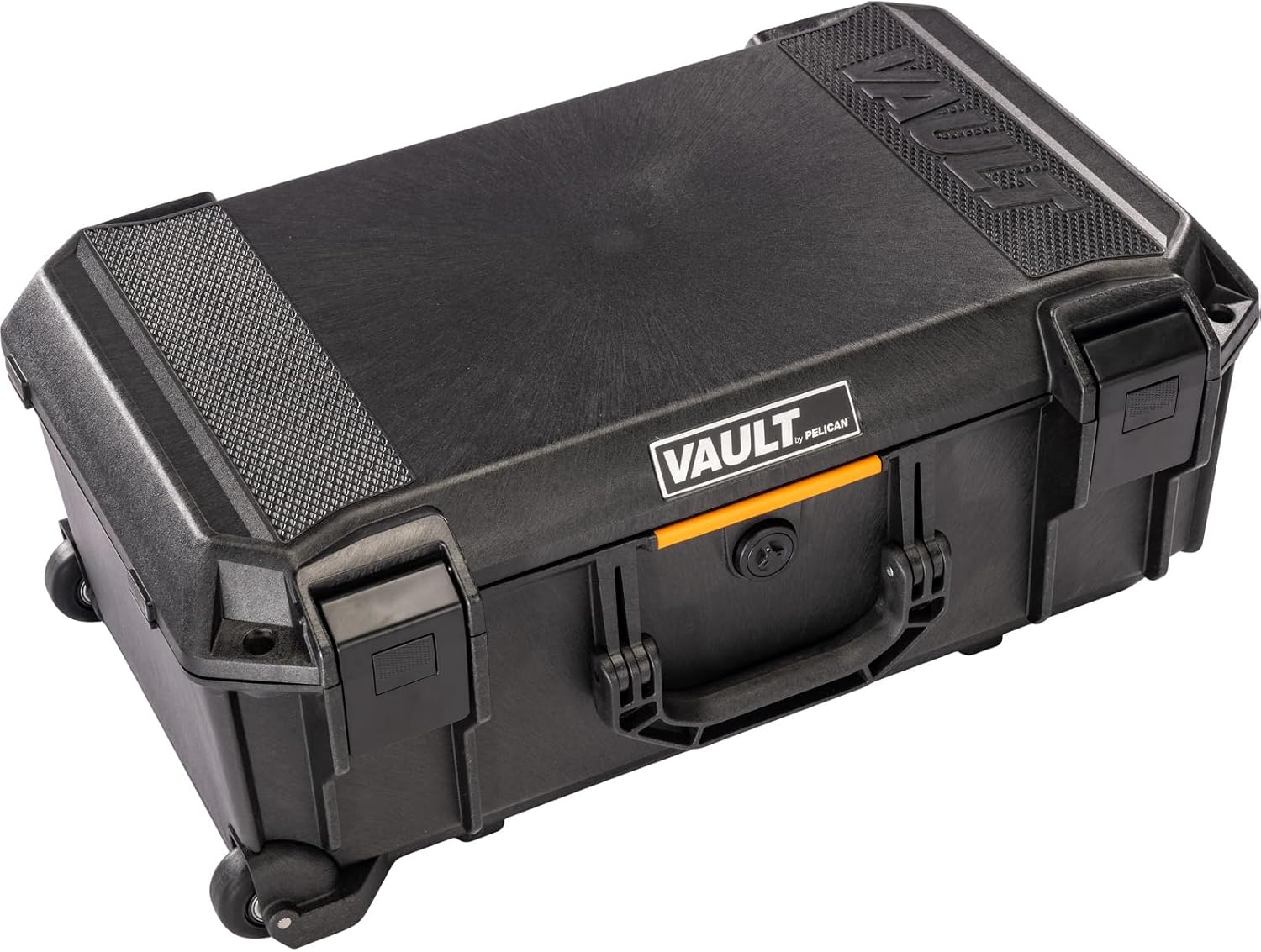
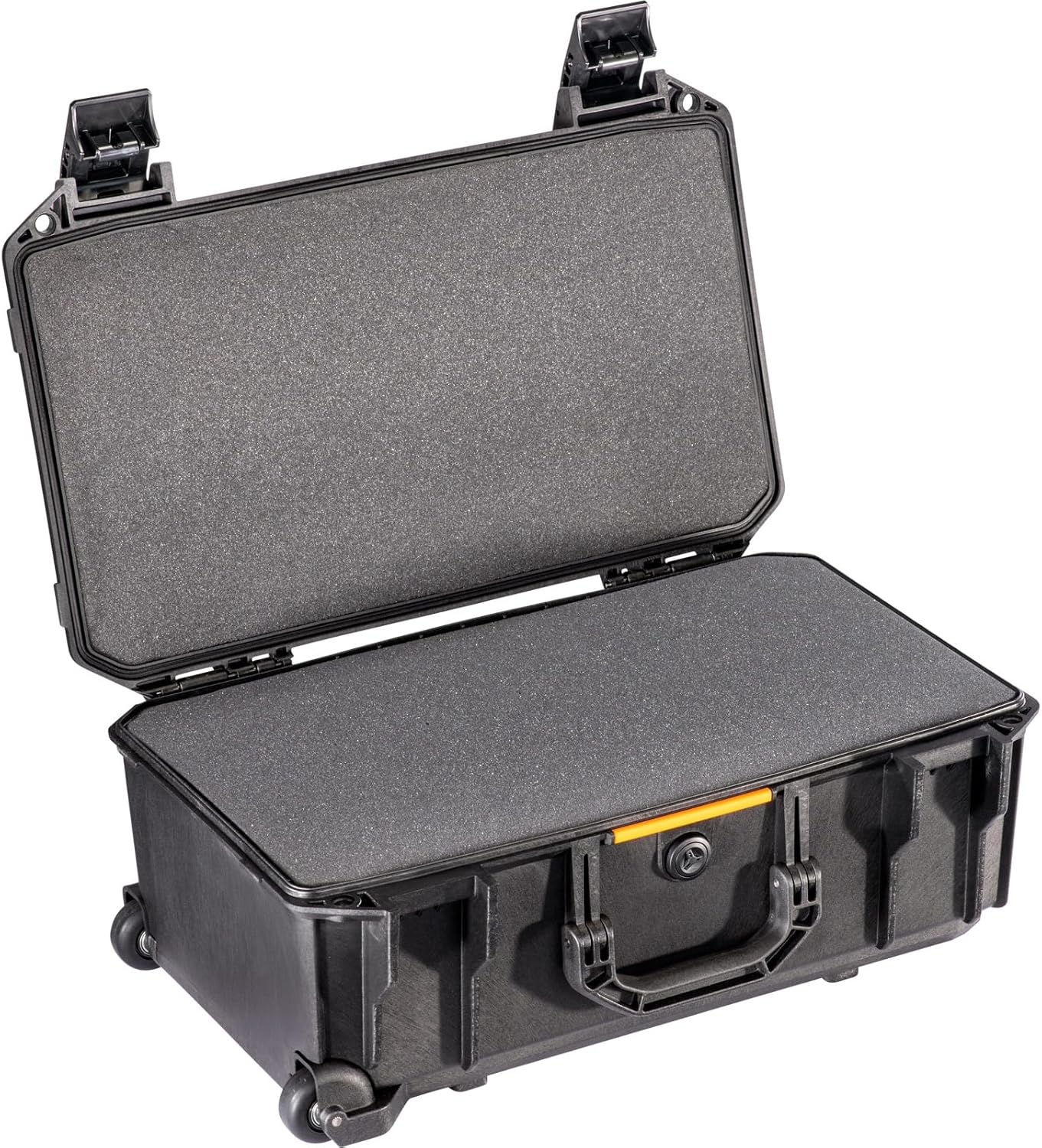
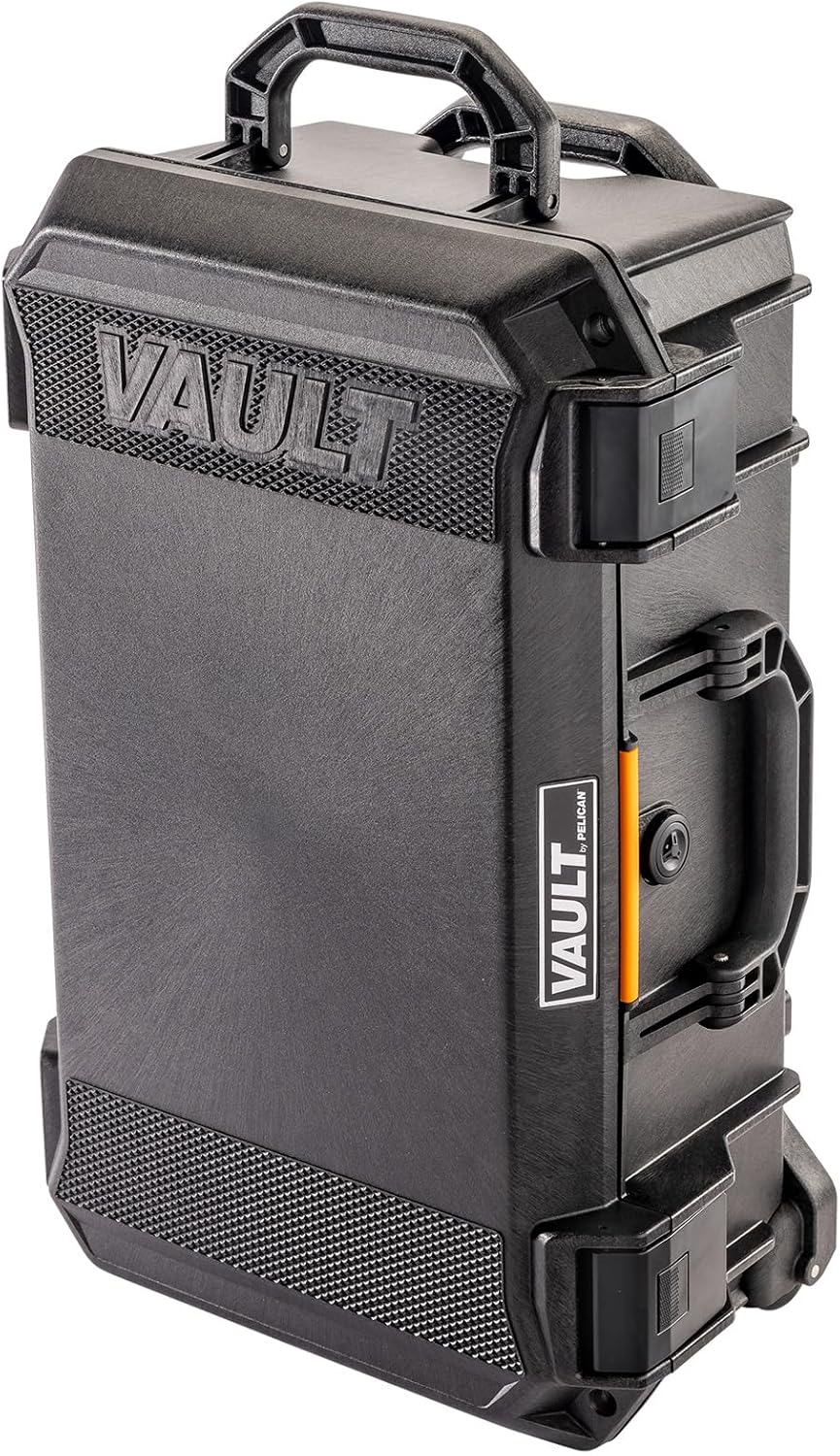

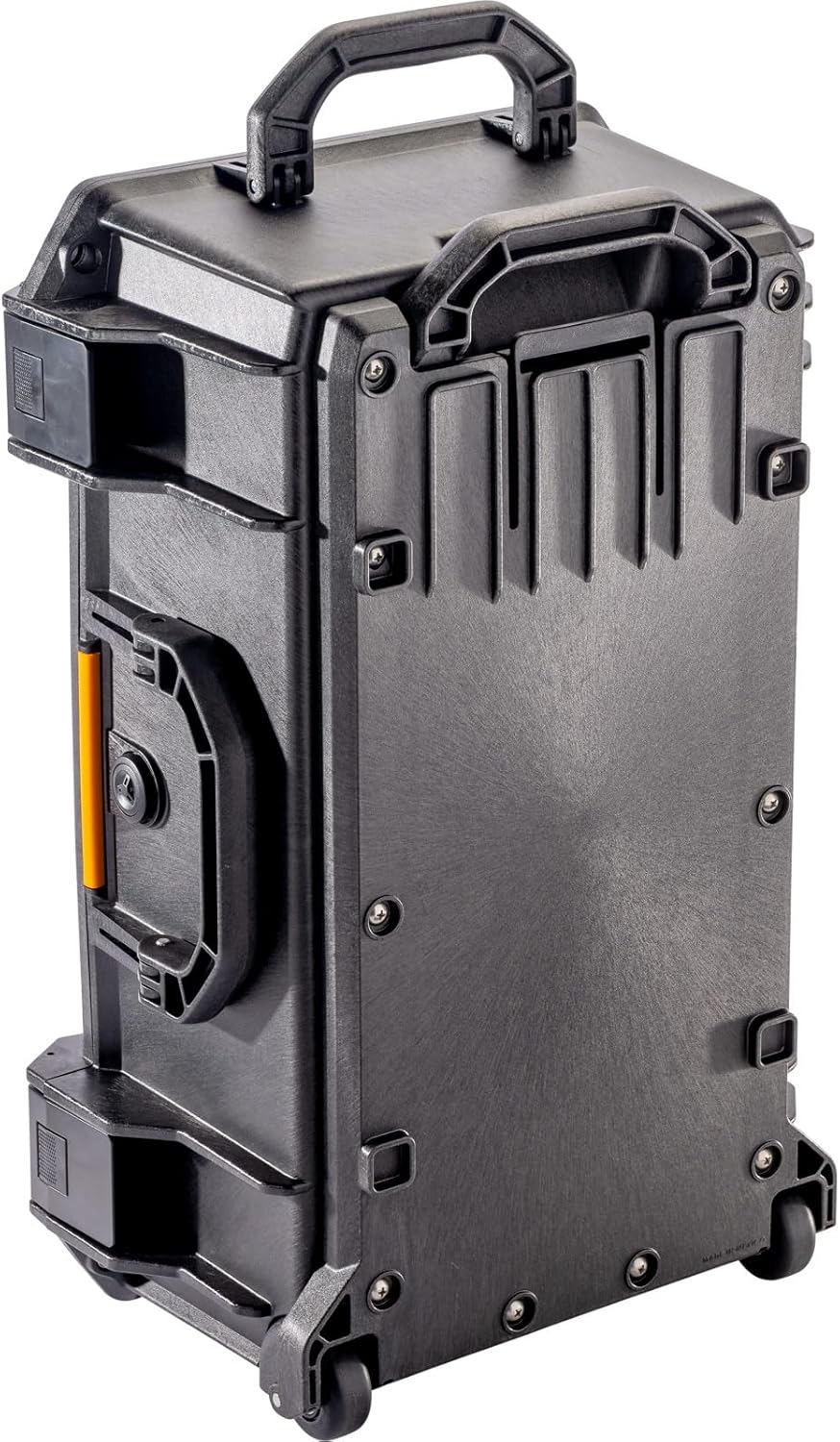

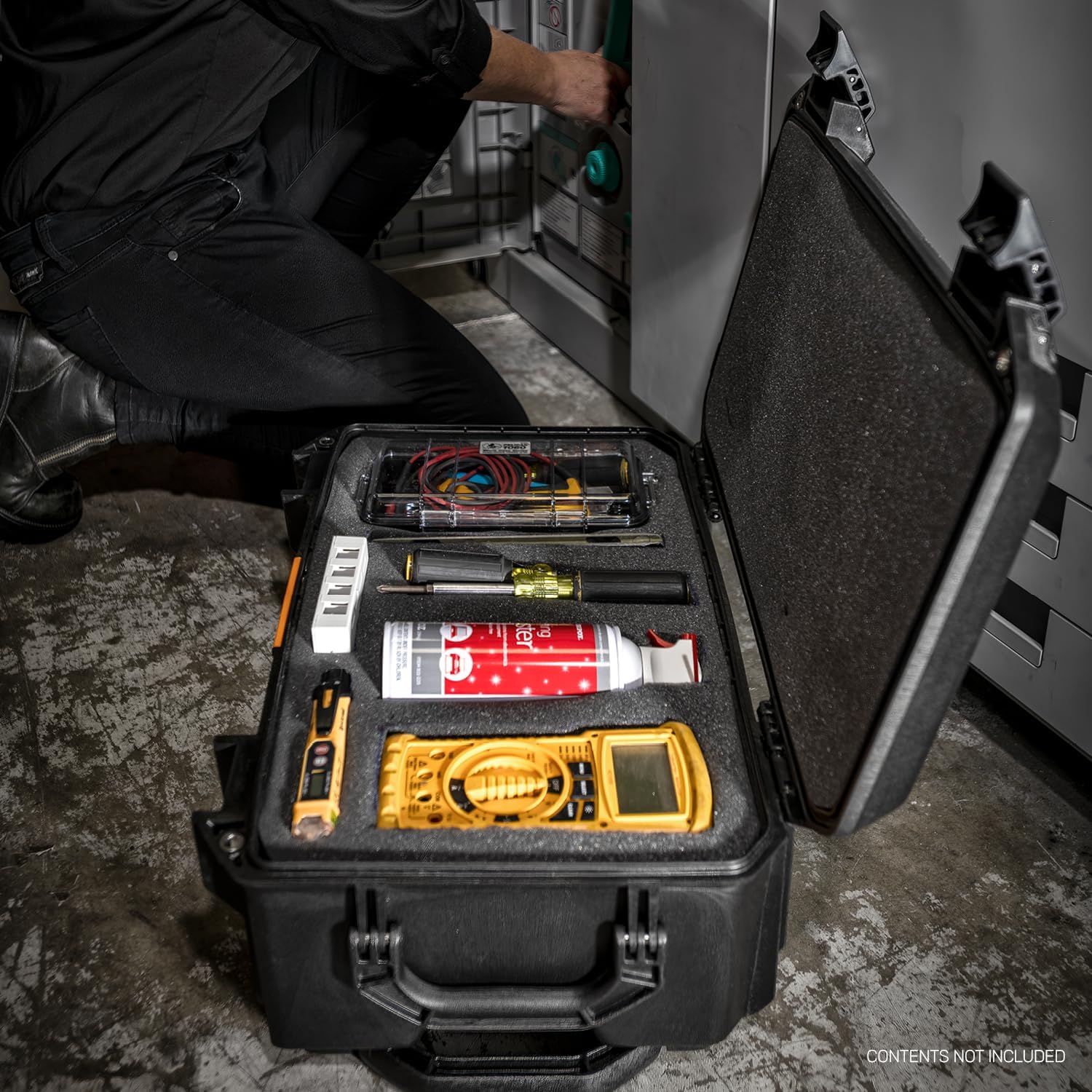
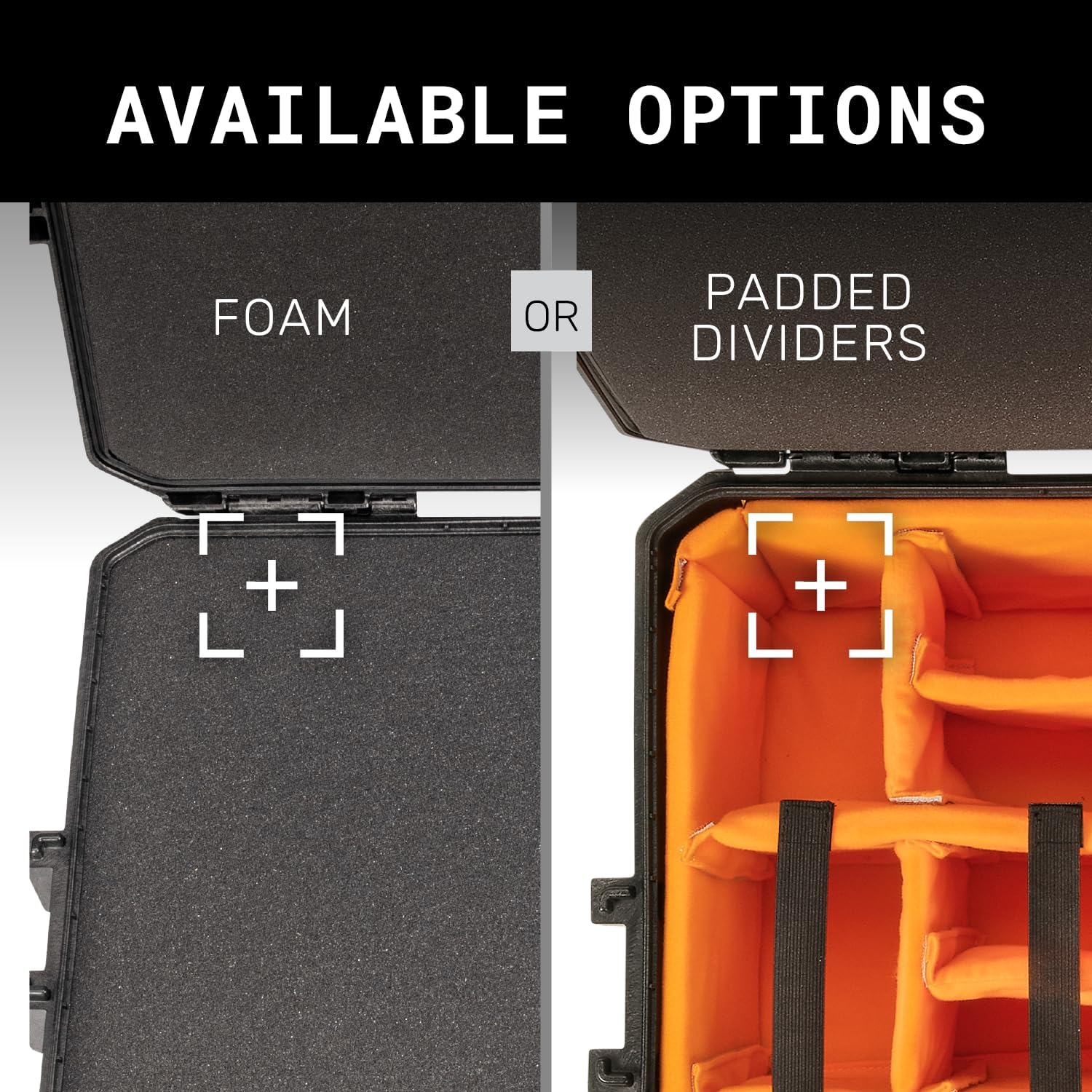
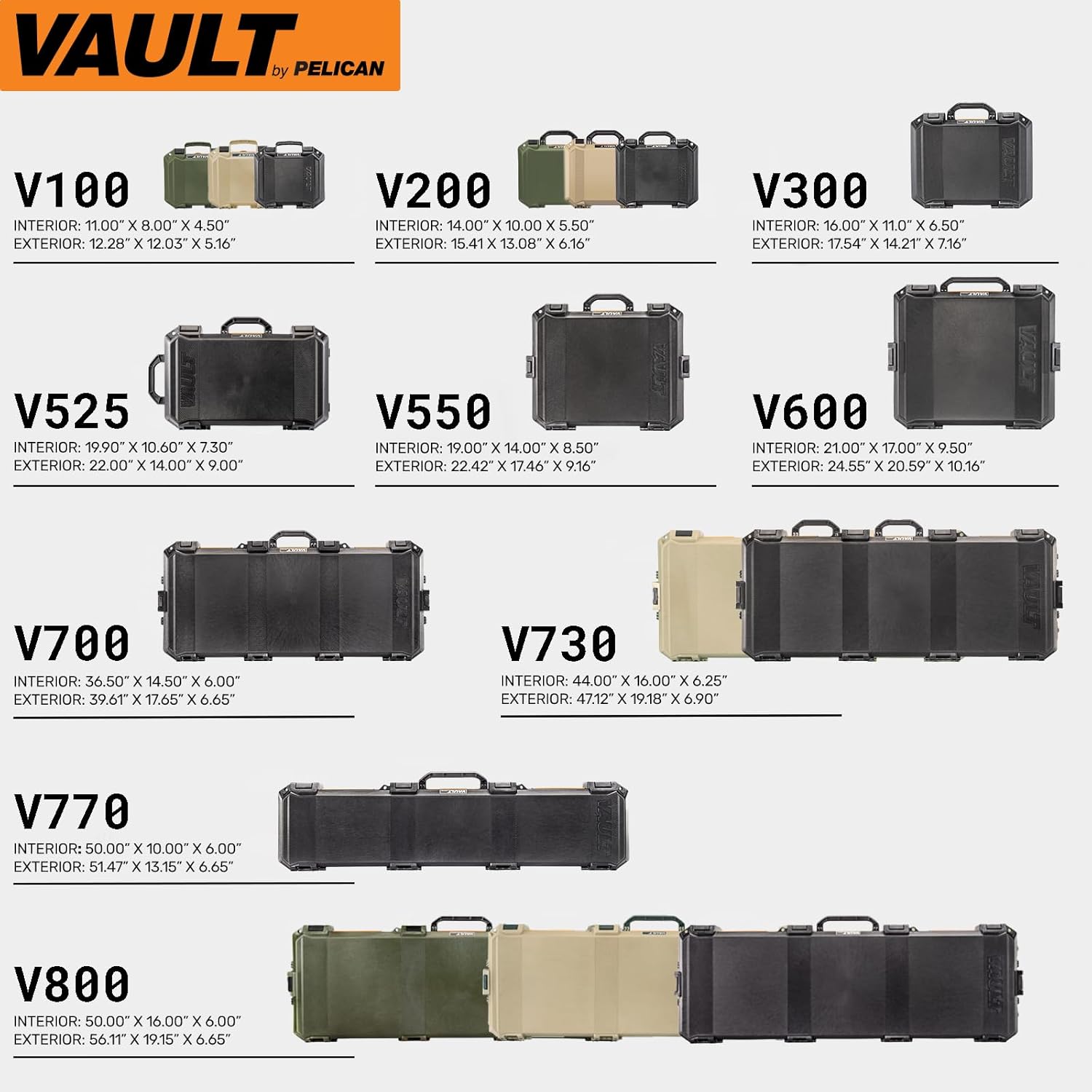
Price: $309.95 - $149.95
(as of Sep 09, 2025 01:52:28 UTC – Details)




